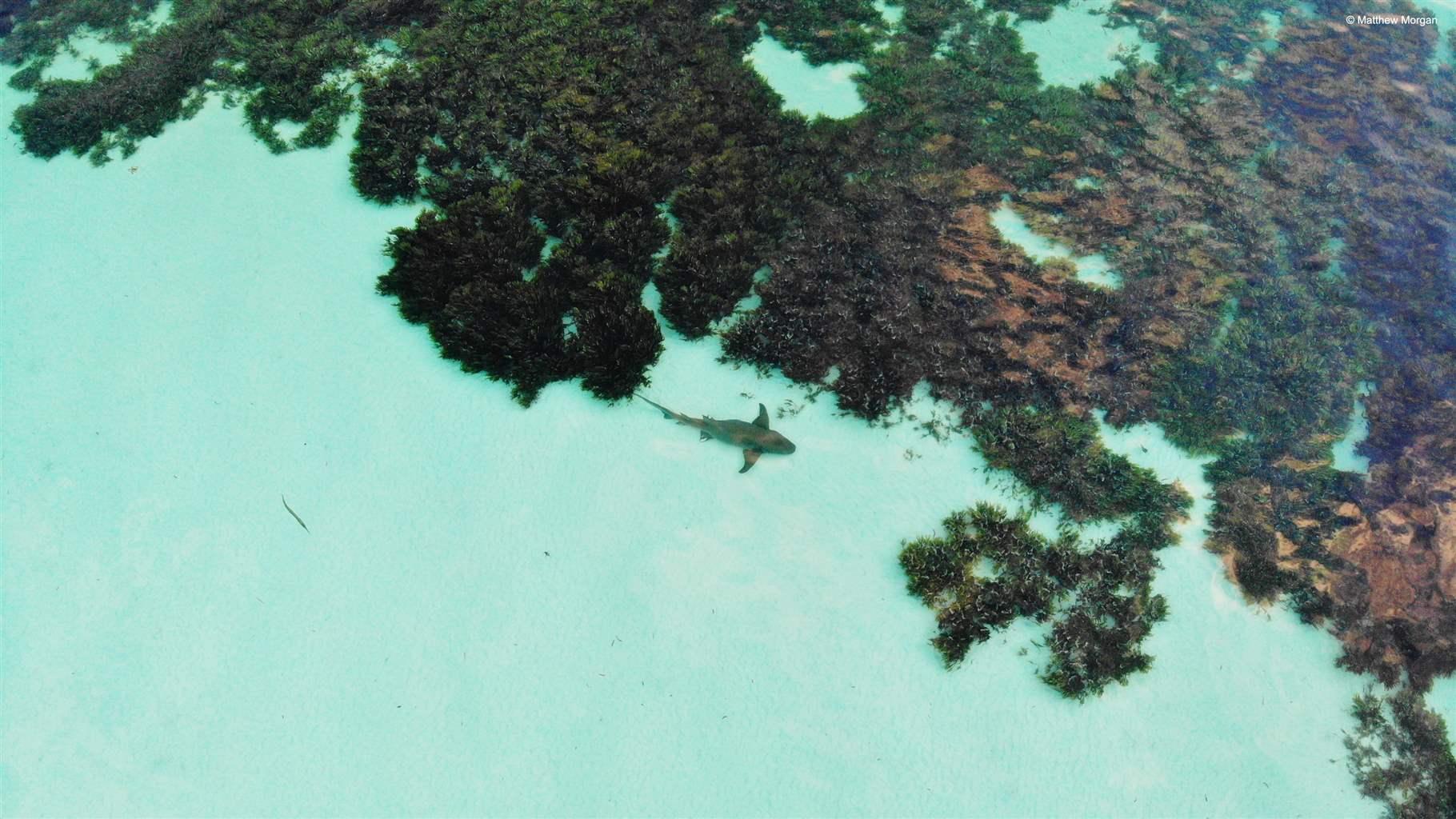Benefits of Protecting Coastal Wetlands Go Beyond ‘Blue Carbon’
COP27 an important milestone for countries motivated to safeguard these ecosystems

With climate negotiators, scientists, conservationists, and others set to gather Nov. 7-18 in Sharm el-Sheikh, Egypt, for the 27th Conference of the Parties (COP27) to the United Nations Framework Convention on Climate Change (UNFCCC), the need to dramatically reduce carbon emissions worldwide has never been clearer. Despite ambitious commitments by governments and businesses at COP26 last year in Glasgow, Scotland, emissions of carbon dioxide and other greenhouse gases rebounded by more than 6% in 2021 after declining by about the same amount during the first year of the COVID-19 pandemic.
COP27 will also mark an important milestone for the role that ocean-based solutions can play in helping to temper, and lessen the effects of, climate change. These solutions can be technical, such as the development of offshore renewable energy projects, or nature-based, such as mangrove, seagrass, and salt marsh coastal wetlands, all of which sequester and store large amounts of carbon. And any action that reduces a country’s net carbon emissions can help it meet the goals of the Paris Agreement, the landmark international climate change treaty that came out of the 2015 United Nations Climate Change Conference.
Under the presidency of Chile, the “Blue COP” held in Madrid in 2019 sought to elevate the role that ocean-based solutions could play in helping meet the goals of the Paris Agreement. Building on this growing awareness, the Glasgow Climate Pact that governments agreed to last year at COP26 would mandate an annual Ocean and Climate Change Dialogue—a series of meetings and assessments within the workings of the UNFCCC to be coordinated by the Subsidiary Body for Scientific and Technological Advice—to further assess how best to effectively harness and scale ocean-based solutions.
Yet despite growing political momentum and stronger institutional framing for ocean-based solutions within the UNFCCC, this year’s Dialogue report reaffirmed that ocean-based solutions remain an underutilized and underfunded tool.
Countries are, however, increasingly recognizing the potential of mangroves, seagrasses, and salt marshes as nature-based solutions to climate change. In fact, in the latest update of their national climate strategies, known as Nationally Determined Contributions (NDC), 29 countries referenced the “blue carbon” potential—the ability to store significant amounts of carbon, mostly in the soils—of these coastal wetlands.
These three habitats remain the only marine nature-based solutions with guidance approved by the Intergovernmental Panel on Climate Change for the measurable contribution they can make to advancing the Paris Agreement’s goal to “protect, enhance and restore natural carbon sinks.” By protecting the existing carbon stocks of these ecosystems, or by restoring degraded coastal wetlands, countries can make a measurable contribution to their emission reduction commitments. Although interest in the potential “blue carbon” benefits of other marine habitats has grown in recent years, only these three coastal wetlands ecosystems can currently contribute to countries’ national mitigation strategies.
However, potential emission reductions are by no means the only reason to include coastal wetlands as nature-based solutions in national climate strategies. These ecosystems also help frontline communities adapt and become more resilient to climate change, by absorbing energy from storm surges; limiting shoreline erosion; filtering water; and providing nursery grounds for an array of species, many of them vital to coastal livelihoods and economies.
In many communities, these benefits outweigh even the carbon storage potential of wetlands, which is why a far greater number of countries—59—have primarily positioned coastal wetlands within their NDCs. Furthermore, the transparency and success of any emission reduction commitment—be it nature-based or technical—relies on effective measurement, monitoring, and management frameworks that many countries are still developing. This combination—adaptation benefits that are more immediately relatable to local communities, and the robust and comprehensive monitoring requirements needed to account for mitigation benefits—explains why many countries are currently looking to include coastal wetlands in their NDCs for the wetlands’ adaptation benefits, rather than for quantifiable emission reduction values.
The trend is echoed in the learnings of the initial phase of The Pew Charitable Trusts’ protecting coastal wetlands and coral reefs project. The project’s partnerships in Belize, Costa Rica, and Seychelles included elements of research, policy, and community engagement focused on the emissions benefit potential of conserving and restoring coastal wetlands. But that wasn’t the primary or sole framing for each country’s inclusion of coastal wetlands in their NDCs; each also positioned targets within their NDCs to reflect the adaptation and resilience benefits provided by coastal ecosystems. For example:
- Belize has committed to at least doubling its mangrove protection by adding at least 6,000 new protected hectares by 2025 and a further 6,000 hectares by 2030; restoring an additional 2,000 hectares of mangroves by 2025 and a further 2,000 hectares by 2030; and developing a national seagrass policy to end the net loss of wetlands by 2025.
- Costa Rica has committed to protecting 100% of its coastal wetlands; restoring priority mangrove areas and developing a national mangrove restoration target by 2025; and developing new financing models to support implementation of its NDC commitment, including expansion of its Payment for Environmental Services program that currently applies only to terrestrial forests.
- Seychelles has committed to mapping the full extent and carbon storage levels of its seagrass ecosystems using pioneering technologies and locally led field validation, and in turn protecting at least 50% of its seagrass and mangrove ecosystems by 2025 and 100% by 2030.
By framing the importance of protecting and restoring coastal wetlands holistically for their mitigation and adaptation benefits—as well as having already made important strides toward implementation of their NDCs—these three countries will continue to lend important lessons to the growing number of countries looking at their coastal wetlands as potential nature-based solutions.
At COP27, the Egyptian presidency’s emphasis on adaptation, alongside the importance of swiftly beginning implementation of the many commitments made at COP26, reaffirms one of the Ocean and Climate Change Dialogue’s earliest recommendations:
“Ocean protections and nature-based solutions can provide a range of adaptation, resilience, and mitigation values but cannot be considered as a substitute for the urgent deep decarbonization of global economies that is needed to preserve the health of the ocean.”
Emissions reductions remain the overwhelming imperative of the Paris Agreement, and there is growing awareness of the role that blue carbon can play in these efforts. However, carbon sequestration and storage aren’t the only climate benefits conferred by the protection and restoration of coastal wetlands, nor the sole motivation for many countries looking to harness these habitats’ potential in the fight against climate change.
Tom Hickey works on The Pew Charitable Trusts’ protecting coastal wetlands and coral reefs project.












